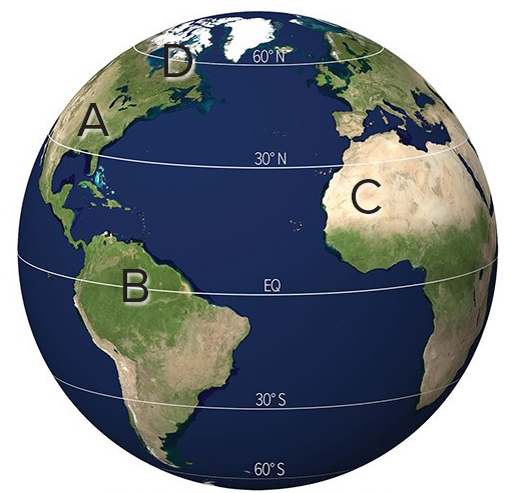In the early history of the earth, the solid surface of the earth weathered more rapidly than now because ________
A) the atmosphere contained large amounts of corrosive methane
B) the early rain was very acidic
C) there were numerous earthquakes and volcanoes breaking up the surface
D) the rocks at the surface were weak because there was little oxygen available
E) there was little topography so shallow water washed across the surface often
B
You might also like to view...
Approximately 9 million childhood lead poisonings were prevented in the United States between 1976 and 2007 primarily because of
a. a ban on the use of lead-based paints and leaded gasoline b. a ban on the use of lead in car batteries c. a ban on the use of lead in pencils d. a ban on the use of transfused blood contaminated with lead e. all of these answers
In the map below, the pedogenic regime known as laterization would most likely be a factor at

A) A.
B) B.
C) C.
D) D.
In the years 2004-2010, the benefit to cost ratio
A) always had more benefits than costs. B) always had more cost than benefits. C) usually had more costs than benefits. D) usually had more benefits than costs.
Which of the following statements best describes the relationship between heat and temperature in the thermosphere?
A. Heat energy is high, and temperatures are high B. Heat energy is low, and temperatures are low C. Heat energy is low, and temperatures are high D. Heat energy is high, and temperatures are low